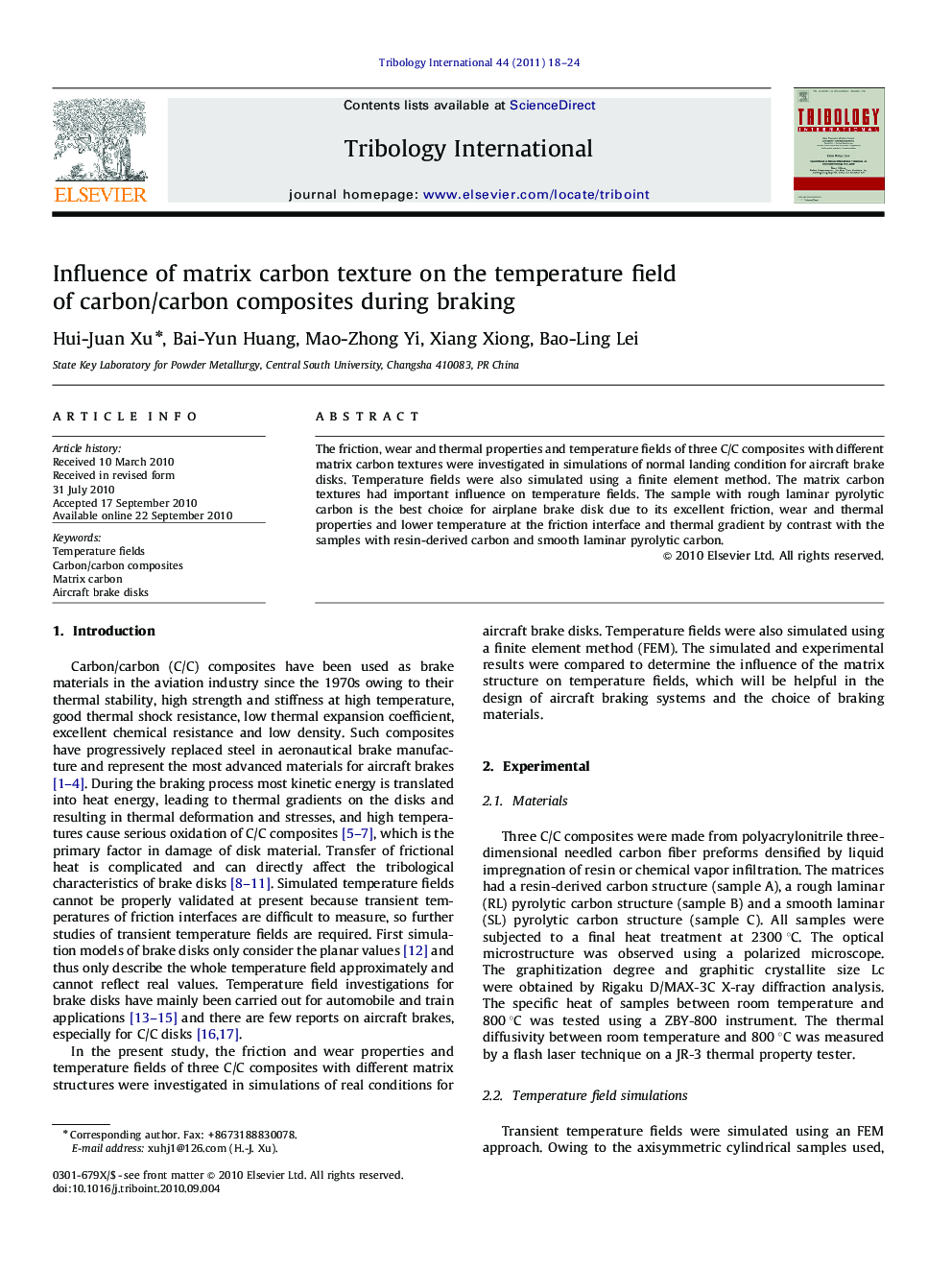| Article ID | Journal | Published Year | Pages | File Type |
|---|---|---|---|---|
| 615500 | Tribology International | 2011 | 7 Pages |
The friction, wear and thermal properties and temperature fields of three C/C composites with different matrix carbon textures were investigated in simulations of normal landing condition for aircraft brake disks. Temperature fields were also simulated using a finite element method. The matrix carbon textures had important influence on temperature fields. The sample with rough laminar pyrolytic carbon is the best choice for airplane brake disk due to its excellent friction, wear and thermal properties and lower temperature at the friction interface and thermal gradient by contrast with the samples with resin-derived carbon and smooth laminar pyrolytic carbon.
Research Highlights► The temperature fields for C/C composites with three different matrix carbon textures under simulation normal landing conditions using FEM was consistent with the experimental results. ► High thermal gradients were observed in the axial direction for laboratory samples, whereas low temperature gradients were detected in the radial direction. The maximum temperature was observed at the outer radius of the friction surface. ► The transient temperature field of C/C composites depends on their friction, wear and thermal properties, which differ for different matrix carbon textures. As the braking power increases, Tmax rapidly increases and the time to Tmax decreases. Good thermal properties improve thermal transfer and reduce temperature at the friction interface and thermal gradients. ► C/C composite with RL pyrolytic carbon comparing with a resin-derived carbon matrix and SL pyrolytic carbon is optimum for airplane brake disk due to its excellent friction, wear and thermal properties.
